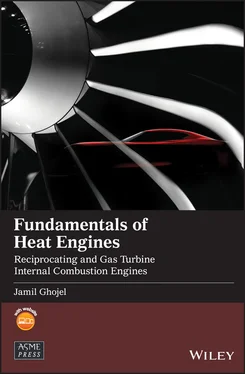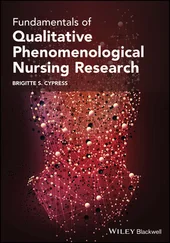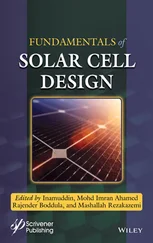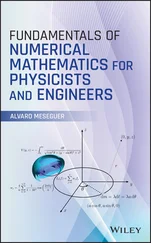4 Chapter 4Figure 4.1 Schematic diagram of a turbocharged engine with constant‐pressure t...Figure 4.2 Combined dual cycle and constant‐pressure turbine cycle in p − V...Figure 4.3 Mean effective pressure of the dual cycle with constant‐pressure tu...Figure 4.4 Schematic diagram of a turbocharged engine with variable‐pressure t...Figure 4.5 Combined dual cycle and variable‐pressure turbine cycle in p‐V and ...Figure 4.6 Thermal efficiency of the dual cycle with variable‐pressure turboch...Figure 4.7 Mean effective pressure of the dual cycle with variable‐pressure tu...Figure 4.8 Schematic diagram of a supercharged engine: E, engine; G, gearing; ...Figure 4.9 Supercharged dual combustion cycle in p − V and T...Figure 4.10 Thermal efficiency of the dual cycle with supercharging (εcomp = 1...Figure 4.11 Mean effective pressure of the dual cycle with supercharging (εcom...Figure 4.12 Schematic diagram of a turbocharged and intercooled engine: E, eng...Figure 4.13 p − V and T − s diagrams for...Figure 4.14 p − V and T − s diagrams for...Figure 4.15 Schematic diagram of a supercharged engine with intercooling: E, e...Figure 4.16 p − V and T − s diagrams of ...Figure 4.17 Comparison of the thermal efficiency and mean effective pressure o...Figure 4.18 Effect of the pressure ratio in the compressor on the performance ...
5 Chapter 5Figure 5.1 Dual fuel‐air cycle.Figure 5.2 Combustion processes in fuel‐air cycles: (a) dual‐combustion (b) co...Figure 5.3 Comparison of the air‐standard and fuel‐air dual cycles.
6 Chapter 6Figure 6.1 Indicator diagrams of a CI engine at partial load operating at 2000...Figure 6.2 Four‐stroke engine induction (a, c) and compression (b, d) processe...Figure 6.3 Four‐stroke engine combustion/expansion (a, c) and exhaust (b, d) p...Figure 6.4 Two‐stroke engine processes: compression 5 − 1 (a...Figure 6.5 Two‐stroke engine processes: exhaust only 2 − 3 (...Figure 6.6 Practical cycle model of the compression ignition engine: (a) raw p...Figure 6.7 Pressure drop during induction process in four‐stroke piston engine...Figure 6.8 Fuel injection and combustion schemes in CI engines: (a, b, c, d) d...Figure 6.9 Calculated practical cycle and measured p − V dia...Figure 6.10 Practical cycle model of the SI engine.Figure 6.11 Fuel delivery and combustion scheme in an actual SI engine.Figure 6.12 Calculated practical cycle and measured p‐V diagram for a SI engin...Figure 6.13 Practical cycle model for a low‐speed CI engine.Figure 6.14 Comparison of the air‐standard, fuel‐air, and practical dual‐combu...Figure 6.15 Wiebe cumulative heat release (a) and rate of heat release (b) for...Figure 6.16 Wiebe cumulative heat release (a) and rate of heat release (b) for...Figure 6.17 Wiebe cumulative heat release (a) and rate of heat release (b) for...Figure 6.18 Schematic diagrams of pressure development during combustion: (a) Figure 6.19 Schematic diagram of the application of the Wiebe function to comb...Figure 6.20 Piston‐crank mechanism of the reciprocating engine.Figure 6.21 Comparison of estimated heat‐transfer coefficients in reciprocatin...Figure 6.22 Heat‐release characteristics for a SI engine (16 kW @ 4000 rpm ): (...Figure 6.23 Calculated and predicted indicator diagrams for a SI engine (16 kW Figure 6.24 Heat‐release characteristics for a CI engine (57.6 kW @ 2200 rpm ):...Figure 6.25 Calculated and predicted indicator diagrams for a CI engine (57.6 Figure 6.26 Double Wiebe representation of the experimental heat‐release rate ...Figure 6.27 Some CFD modelling results for a direct injection compression igni...
7 Chapter 7Figure 7.1 (a) Piston‐connecting rod‐crankshaft assembly of a six‐cylinder inl...Figure 7.2 Schematic of the piston‐crank mechanism with the definitions used i...Figure 7.3 Kinematics of the reciprocating CI engine (R = 59 mm, τ = 0.325...Figure 7.4 Dynamically equivalent mass distribution of the piston‐crank mechan...Figure 7.5 Forces acting at the piston pin and crank pin: (a) direct forces; (...Figure 7.6 Forces acting on the piston pin at A in a CI engine (D = 104 mm, pm...Figure 7.7 Forces acting on the crank pin at B in a CI engine (D = 104 mm, pma...Figure 7.8 Forces and moments acting on the crankshaft supports at O.Figure 7.9 The resultant force F cpacting on the crank pin at B.Figure 7.10 Force N versus force F tfor a CI engine: (a) 2000 rpm ; (b) 4000 rp ...Figure 7.11 Schematic diagram for the determination of F cpfrom the polar diag...Figure 7.12 Polar diagram for the SI engine in Table 7.1.Figure 7.13 Construction of the crank pin wear diagram.Figure 7.14 Force F cpas a function of crank angle θ.Figure 7.15 Determination of the resultant force F cacting on the crankshaft b...Figure 7.16 Forces acting on a crankshaft with two cranks at an angle of 120°.Figure 7.17 Inline‐type engines: (a) four‐cylinder engine with γ = 180°; (b) s...Figure 7.18 (a) V‐engines with articulated connecting rod; (b) side‐by‐side co...Figure 7.19 Eight‐cylinder V 90° engine.Figure 7.20 Cycle overlap and firing sequence of an eight‐cylinder V‐type engi...Figure 7.21 Construction of the resultant torque for a four‐stroke, four‐cylin...Figure 7.22 Effect of the number of cylinders on the torque profile and mean t...Figure 7.23 Effect of the number of cylinders on the mean torque and torque un...Figure 7.24 Fluctuations of the torque and angular velocity of a multi‐cylinde...Figure 7.25 Balancing a single‐cylinder engine: (a) centrifugal inertial force...Figure 7.26 Balancing a two‐cylinder inline engine.Figure 7.27 Inertia forces in a two‐cylinder V‐engine.Figure 7.28 Balancing forces and moments in an eight‐cylinder V‐engine: (a) fr...
8 Chapter 8Figure 8.1 Parameters of actual engine cycles: (a) SI engine; (b) CI engine.Figure 8.2 p‐V indicator diagrams of pumping losses in naturally aspirated eng...Figure 8.3 Variable‐speed characteristics: (a) SI engine; (b) CI engine. (1 – ...Figure 8.4 Variable‐power characteristics of a typical automotive SI engine.Figure 8.5 Effect of test conditions on engine brake power at different speeds...Figure 8.6 Variation of engine parameters with engine speed at full throttle.Figure 8.7 Indicated efficiency η iand the ratio η i/ α versus th...Figure 8.8 SI engine performance characteristics: S = 95.25 mm, D = 86.36 mm, ...Figure 8.9 3‐D representation of the load characteristics of an SI engine: N =...Figure 8.10 2‐D load characteristics of the SI engine in Figure 8.9.Figure 8.11 Fuel map for an SI engine derived using Eq. (8.41).Figure 8.12 3‐D representation of the power characteristics for a CI engine: N Figure 8.13 2‐D power characteristics of a CI engine for the ranges N = 800–22...Figure 8.14 Fuel map for the generic CI engine derived from Eq. 8.42
9 Chapter 9Figure 9.1 Simple gas turbine cycle: (a) engine schematic; (b) T‐s diagram of ...Figure 9.2 Thermal efficiency of the Brayton cycle for three working fluids.Figure 9.3 Specific output work versus pressure ratio and temperature ratio T3...Figure 9.4 T‐s diagrams of the Brayton cycle with different pressure ratios.Figure 9.5 Effect of temperature ratio on the specific output work at two cons...Figure 9.6 Cycle with heat exchange: (a) engine layout; (b) cycle T‐s diagram ...Figure 9.7 Cycle with heat exchange: (a) thermal efficiency; (b) specific outp...Figure 9.8 Cycle with reheat: (a) engine layout; (b) cycle T‐s diagram (C – co...Figure 9.9 Cycle with reheat: (a) thermal efficiency; (b) specific output work...Figure 9.10 Cycle with intercooling: (a) engine layout, (b) cycle T‐s diagram ...Figure 9.11 Cycle with intercooling: (a) thermal efficiency; (b) specific outp...Figure 9.12 Cycle with heat exchange and reheat: (a) engine layout; (b) cycle ...Figure 9.13 Cycle with heat exchange and reheat: (a) thermal efficiency; (b) s...Figure 9.14 Cycle with heat exchange and intercooling: (a) engine layout, (b) ...Figure 9.15 Cycle with heat exchange and intercooling: (a) thermal efficiency;...Figure 9.16 Cycle with heat exchange, reheat, and intercooling: (a) engine lay...Figure 9.17 Cycle with heat exchange, reheat, and intercooling: (a) thermal ef...Figure 9.18 Comparison of all theoretical cycles.Figure 9.19 Comparison of all theoretical cycles ( a = 5, rc = va...
Читать дальше










